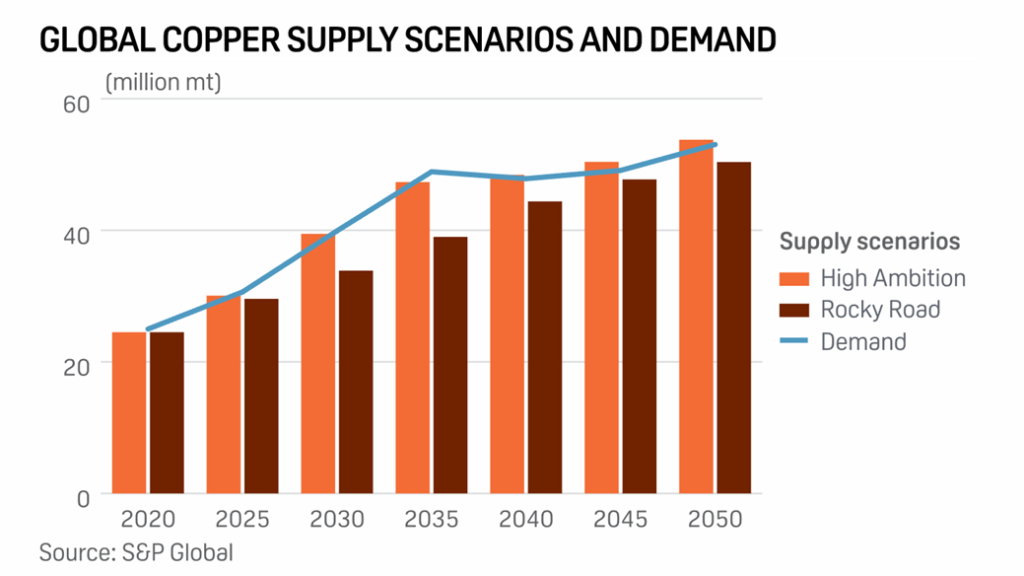Rapid growth in the electric vehicle (EV) market and ramped up global efforts to implement net-zero policies has resulted in a significant and indeterminate copper deficit.
From a decarbonization standpoint, things are looking up, with green technologies transitioning to the forefront of the world stage. Yet the electrification of the transportation sector and overall transition to green energy is already set to experience delays.
In a report from S&P Global Market Intelligence, the global copper market supply is projected to fall short by unprecedented levels of demand by 2035, with the extent of the deficit predominantly being contingent on the industry’s ability to enhance production capacities, as energy transition-related applications, such as EVs, are expected to boost general copper demand to about 50Mt in that time frame from the present 25Mt.

“We have two scenarios, one being the ‘rocky-road’ scenario, which is business-as-usual with a continuation of current trends where we are,” S&P Global vice chairman Daniel Yergin said during a virtual panel discussion the company hosted.
“But then we have the ‘high-ambition’ scenario, in which everything goes right, and we are at the very outer bounds of what is realistic in terms of supply growth,” he added.
Furthermore, the report reveals that the market in 2035 could expect a deficit of up to about 1.5Mt in the high-ambition supply scenario and up to a 9.9Mt deficit in the rocky-road supply scenario.
Anglo American’s (LSE: AAL) CEO, Duncan Wanblad, also warned against future copper supply restrictions, explaining that the world is headed for a severe shortage, particularly as new mines take prolonged periods to get up and running, and copper is also notoriously difficult to mine.
“I genuinely don’t see where all of this copper is going to come from at this point in time,” he added.
This notion seems prevalent amongst several major miners, with many looking to expand their copper production by making new substantial investments or commencing major exploration projects. Rio Tinto (ASX: RIO), for example, has offered an all-cash proposal to attain Turquoise Hill Resources (TSX: TRQ), a company focused on the development of the Oyu Tolgoi copper-gold mine in southern Mongolia. Similarly, mining giant BHP (ASX: BHP) is looking for new projects in the Democratic Republic of Congo.
Despite these ramp ups in exploration and investment efforts, new supply will inevitably struggle to match the severity of growing demand. Goldman Sachs strategist, Nick Sowden, commented on a Bloomberg podcast, that he believes supply in the near term is also being driven by spot price fundamentals, particularly slow supply growth combined with disruptions from the Ukraine war and COVID-19 restrictions implemented in China, all of which require lengthy solutions.
How this is going to play out in the near and mid-term remains to be seen. To find out more about copper, read The Assay’s guide to the red metal here.












